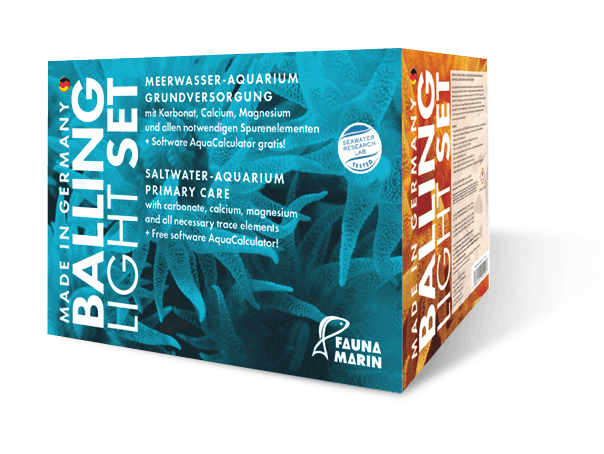NITRITE (NO2−)
In the aquarium, nitrite is produced as an intermediate stage during various processes in the nitrogen cycle, during oxidation by aerobic bacteria (nitrification) from ammonium ion/ammonia via nitrite to nitrate, and by facultatively anaerobic bacteria during the decomposition of nitrate (denitrification). These processes take place simultaneously in biofilms. No deep sand bed or deep porous material is necessary for this. Depending on the available amount of nutrients, the bacteria strains involved vary.
What is this:
Nitrite is an intermediate stage in the nitrogen balance and should not be detectable in stable operating systems.
Problems:
Although nitrite in seawater is not directly toxic, a disturbed nitrogen cycle leads to further problems and undesired algae growth in the aquarium.
Measures:
If the values are too high, the supplementation of bacteria/Bacto Reef Blend is recommended. At the same time the supply of the system should be checked. A lack of enzyme-relevant metals such as zinc should be avoided at all costs.
Indicator species:
Fish appear nervous, have an increased respiratory rate. Corals appear dull, polyps are not extended as usual and the polyps are not fully opened. Overall the tank appears dull.
Value too high:
Check the bio filter effect of the aquarium. Use Bacto Blend, reduce feeding until nitrification is stable. During the tank setup phase, nitrit is normal and harmless up to 2 mg/l (0,26 US.liq.gal.).
Too low value:
No dosing intended
| Variety | nitrogen, intermediate product |
|---|---|
| Default value | 0 µg/l (0,26 US.liq.gal.) |
| Skill Level | |
| Source | Intermediate product of the nitrogen cycle |
| Available | no dosing intended |
| Importance 1–6 | 3 |
| Detection quality | safe |
| Relation values | none |

Balling Light:
In the Balling-Light system, no nutrient input is made in the basic supply. Calcium supply and nutrient input are strictly separated. Nitrite is often present in the water during the initial setup phase or when moving the tank. Detecting nitrit in a saltwater tank points to a disturbed nitrogen cycle. Additional dosaing of Bacto Blend starter bacteria may be necessary.
There are various situations where a temporary increase in nitrite concentration may occur. However, due to the high chloride content, nitrite in seawater is much less harmful than in fresh water. Nevertheless, the value should be observed because it indicates a disturbance in the nitrogen cycle.
New aquarium setup
Depending on the chosen decoration and the bacteria used, the nitrite level increases between the 3rd and 14th day. Afterwards the nitrite value should decrease again.
Too fast or too high stocking density
If algae and biofilms in an aquarium are too fast or collapse, nitrite is produced by the faster conversion of the introduced ammonia to nitrite than the further processing to nitrate. It may take a few days for the bacteria to adapt to the nutrient situation by propagating.
Too much carbon input
If simple carbon is added to the tank for nutrient reduction and this is overdosed, there is also an increase in NO2−, as nitrate is reduced quickly.
Relocation
During an aquarium move, the active biofilm is strongly disturbed by the necessary interventions. This has an influence on the nitrogen cycle. Until the biological balances have stabilized again, the nitrite value will be detectable.
Trace element deficiency
High nutrient levels or a low supply of trace elements and vitamins leads to a breakdown of the biofilm in many tanks. Our Balling Light System takes this into account and, above all, we have put great importance to the optimum supply of the bacteria films. Stable systems avoid nutrient fluctuations. This is essential for long-term aquarium success and healthy corals.
Even though NO2− is less toxic in seawater tanks than in freshwater, too high values will have an impact on the condition of fish and corals. Values above 1.0 mg/l (0,26 US.liq.gal.) will have an effect on the inhabitants, and as a result, typical fish diseases occur more frequently. Also with corals, too high nitrite values lead to growth problems and increased deposits of boring algae in coral skeletons.
Tip:
Regular partial water changes and the replacement of parts of the bottom soil with new material as well as a sufficient supply of the aquarium are usually sufficient to avoid high nitrite levels.